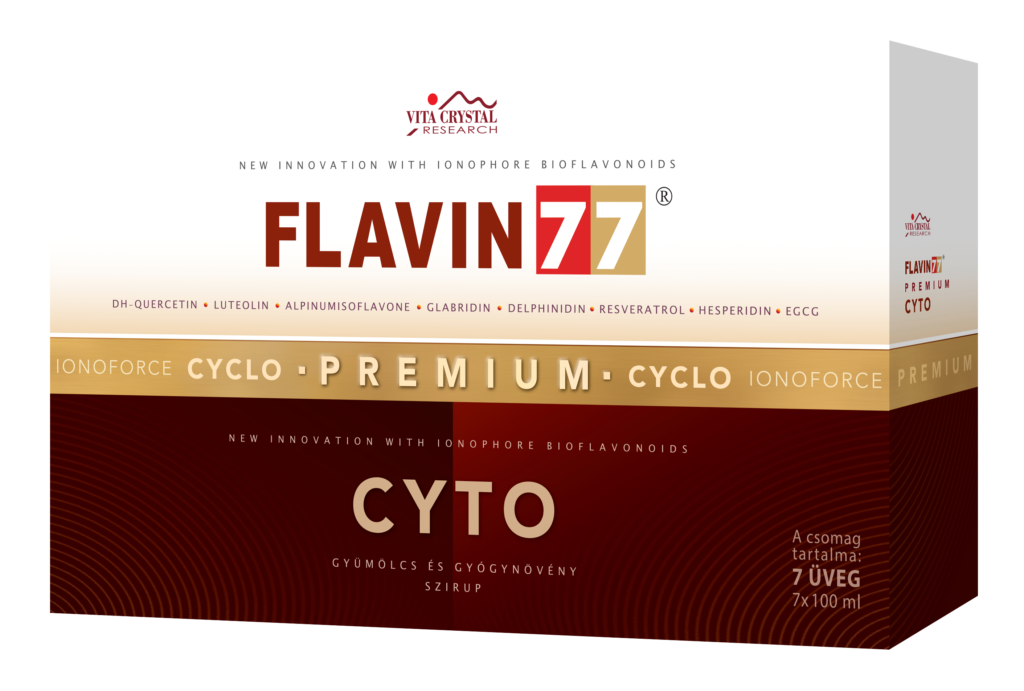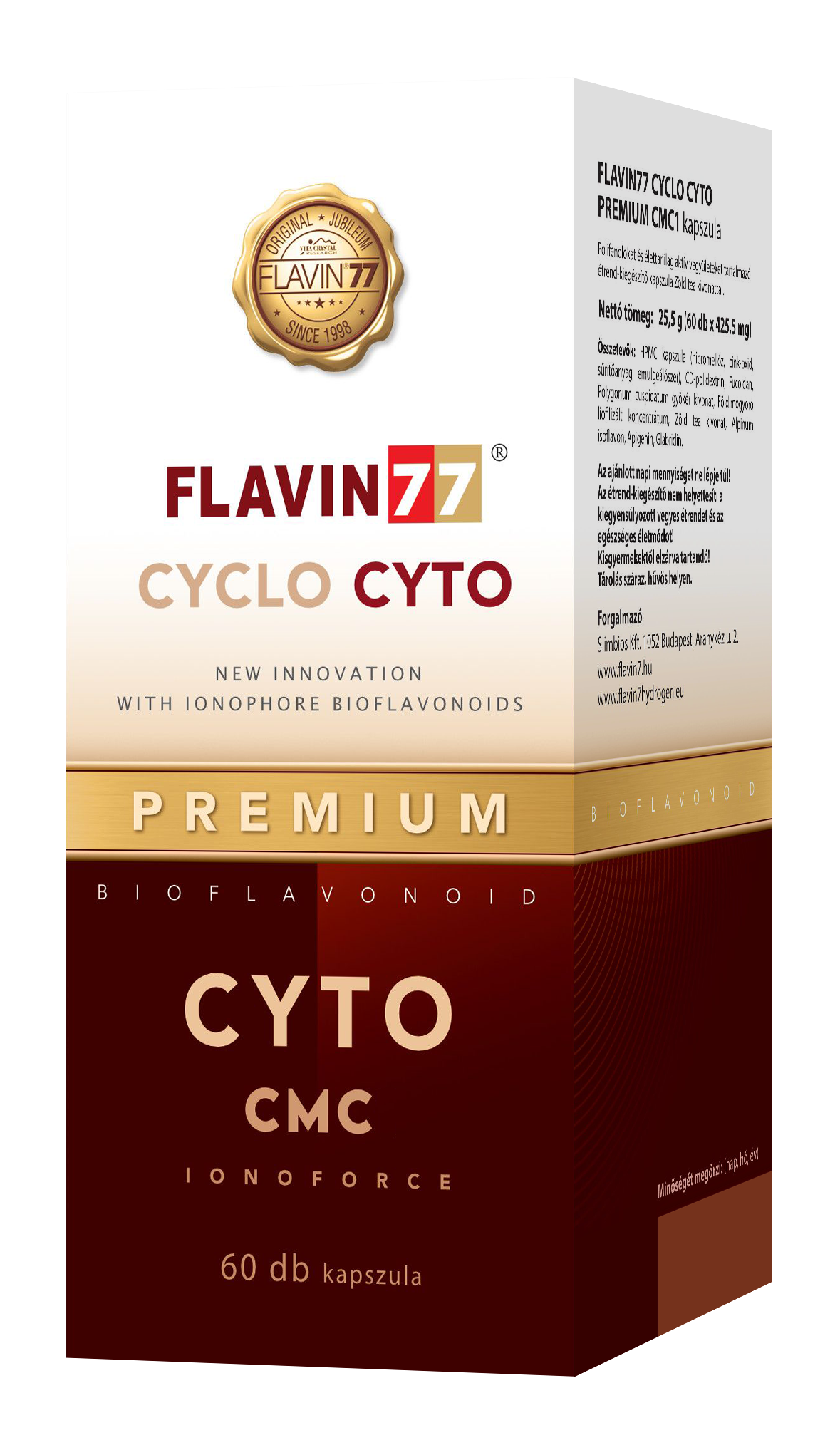
FLAVIN 77 CYCLO CYTO is a high quality antioxidant product with increased active ingredient content.
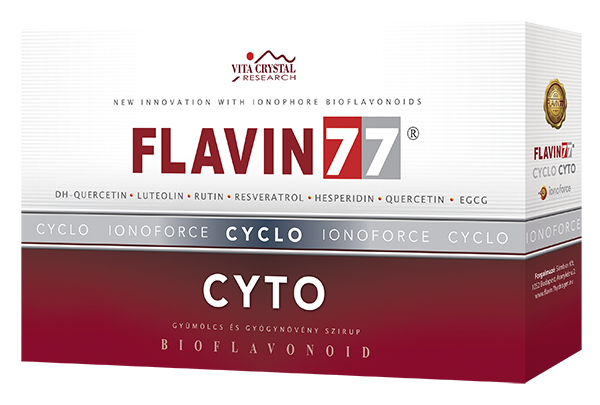
370€
Added polyphenols: dihydro-quercetin, luteolin, rutin, resveratrol, hesperidin, quercetin, EGCG.
As a result of selected polyphenols and flavonoids, it is a special, more effective preparation, which protects cells and chromosomes from damages caused by adverse environmental effects.
Enhanced absorption: Because of the new technology, absorption through the mucosa in the oral cavity is much more efficient than with traditional formulations.
Due to their chemical properties, cyclodextrins are able to deliver the linked molecule with a much greater efficiency to the medium where they originally have a reduced absorption capacity.
The composition of FLAVIN 77 CYCLO CYTO was defined by the actual scientific results of bioflavonoids and other chemopreventive phytochemicals immunomodulatory activity. The active ingredients support mechanisms that optimize the activity of the immun system and help to prevent diseases.
Extra, specialised flavonoid selections for the most common types of tumours
CMC1 - lung cancer

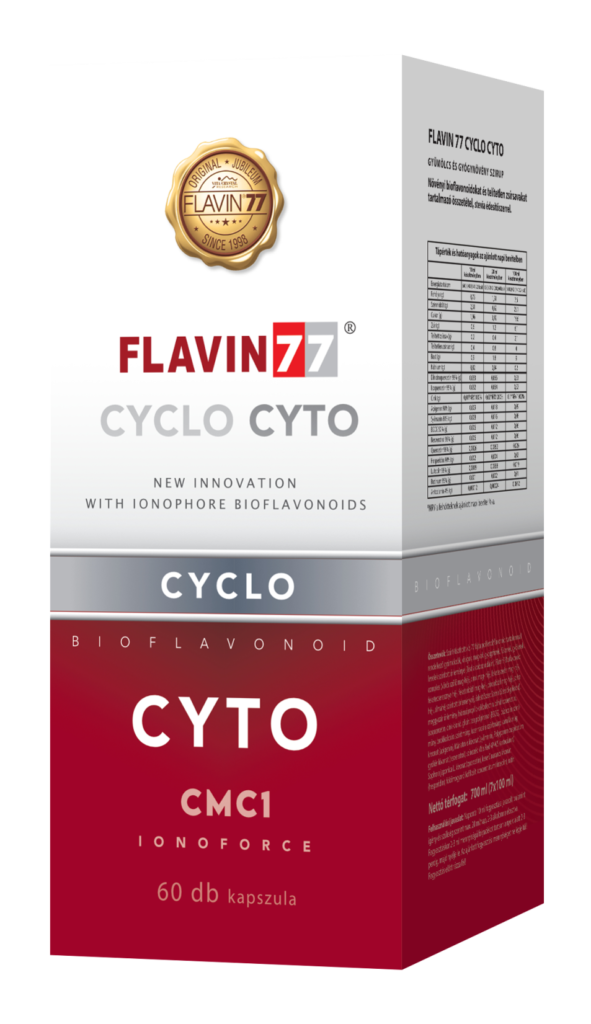
CMC2 - digestive cancers
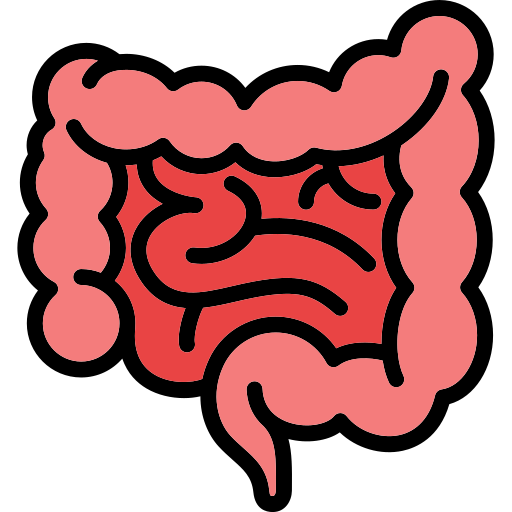
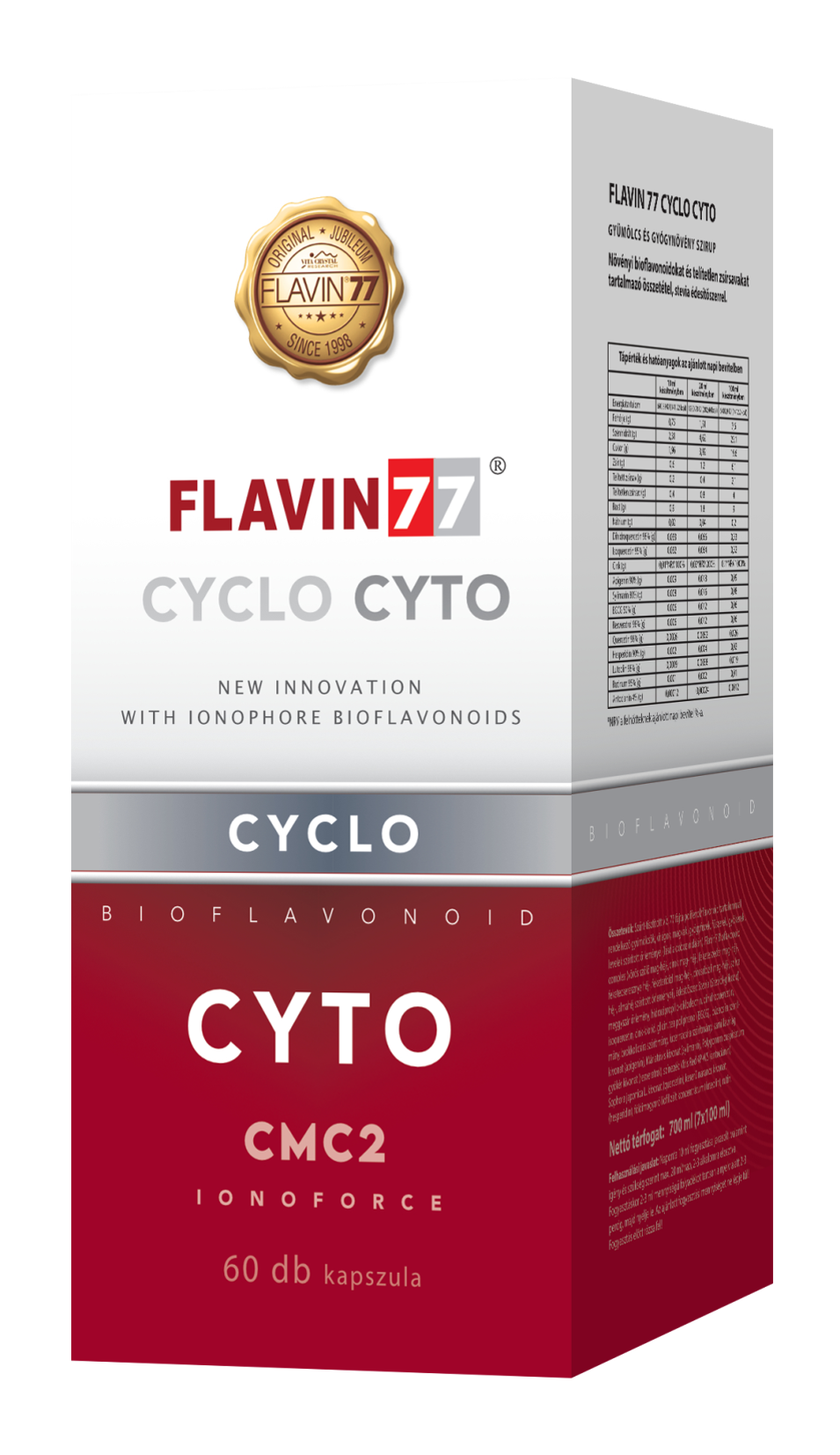
CMC3 - breast cancer

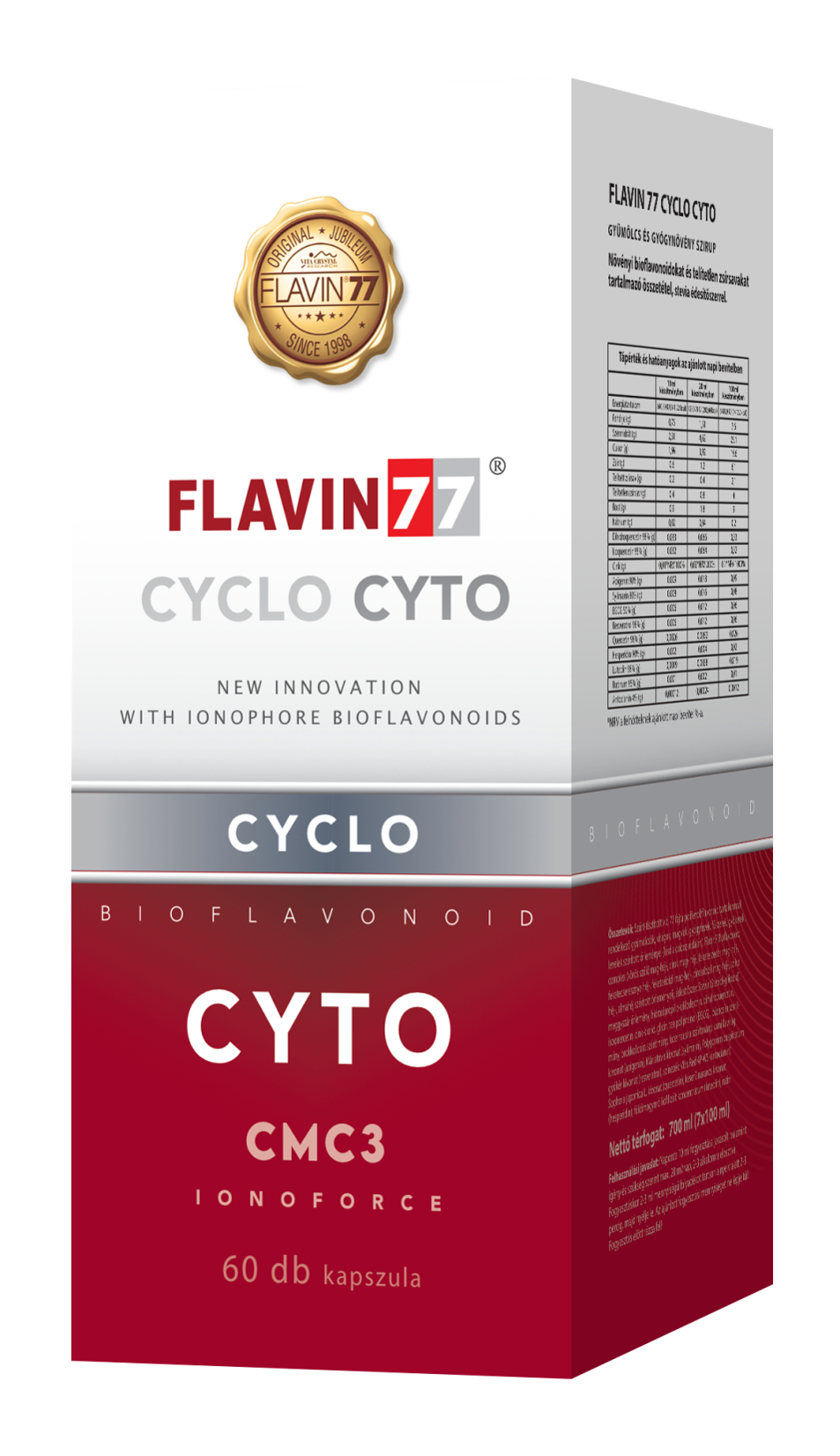
CMC4 - prostate cancer

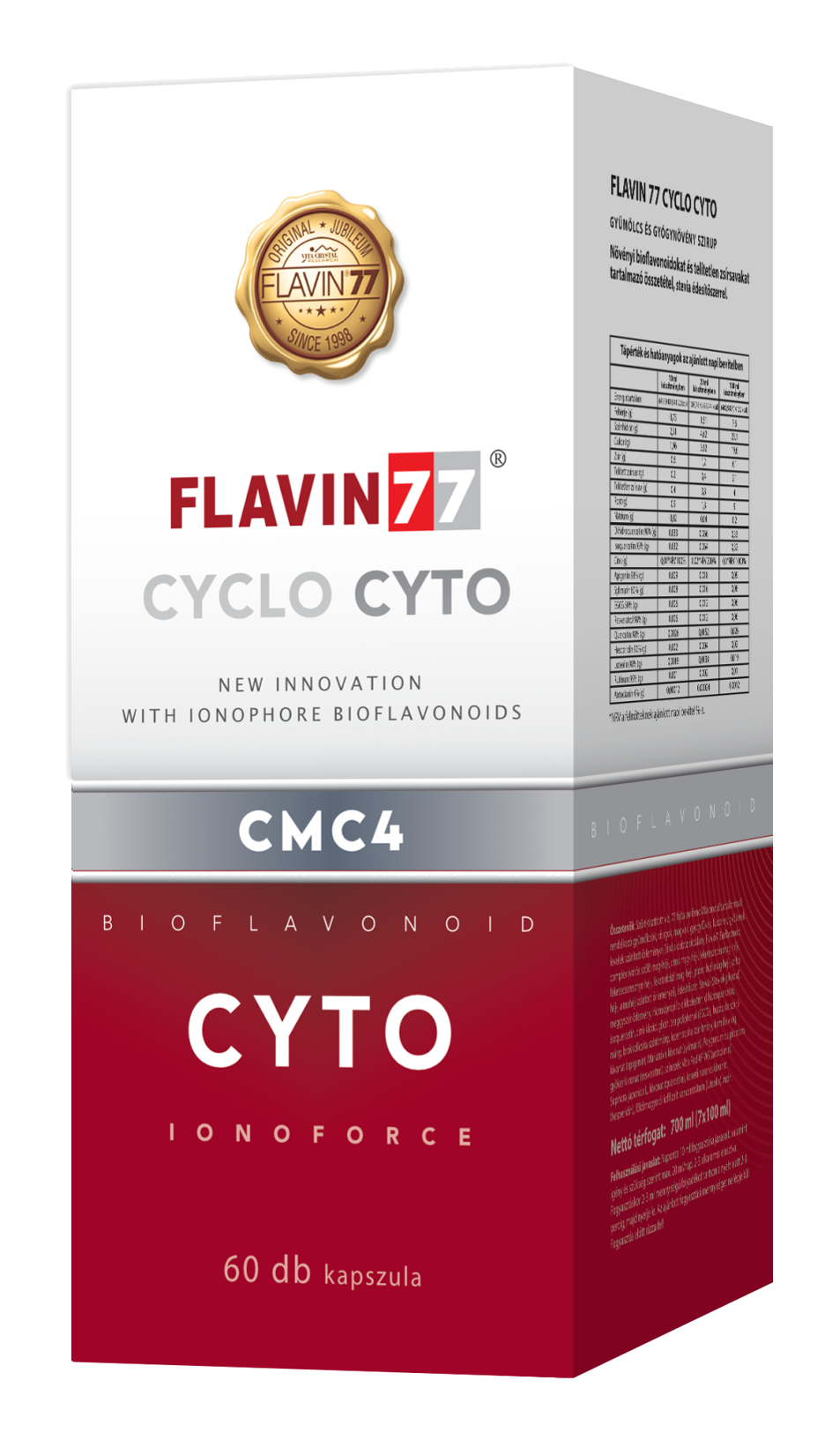
CMC5 - liver cancer
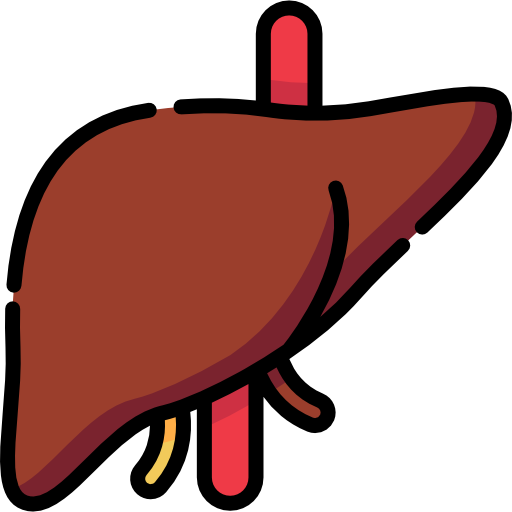
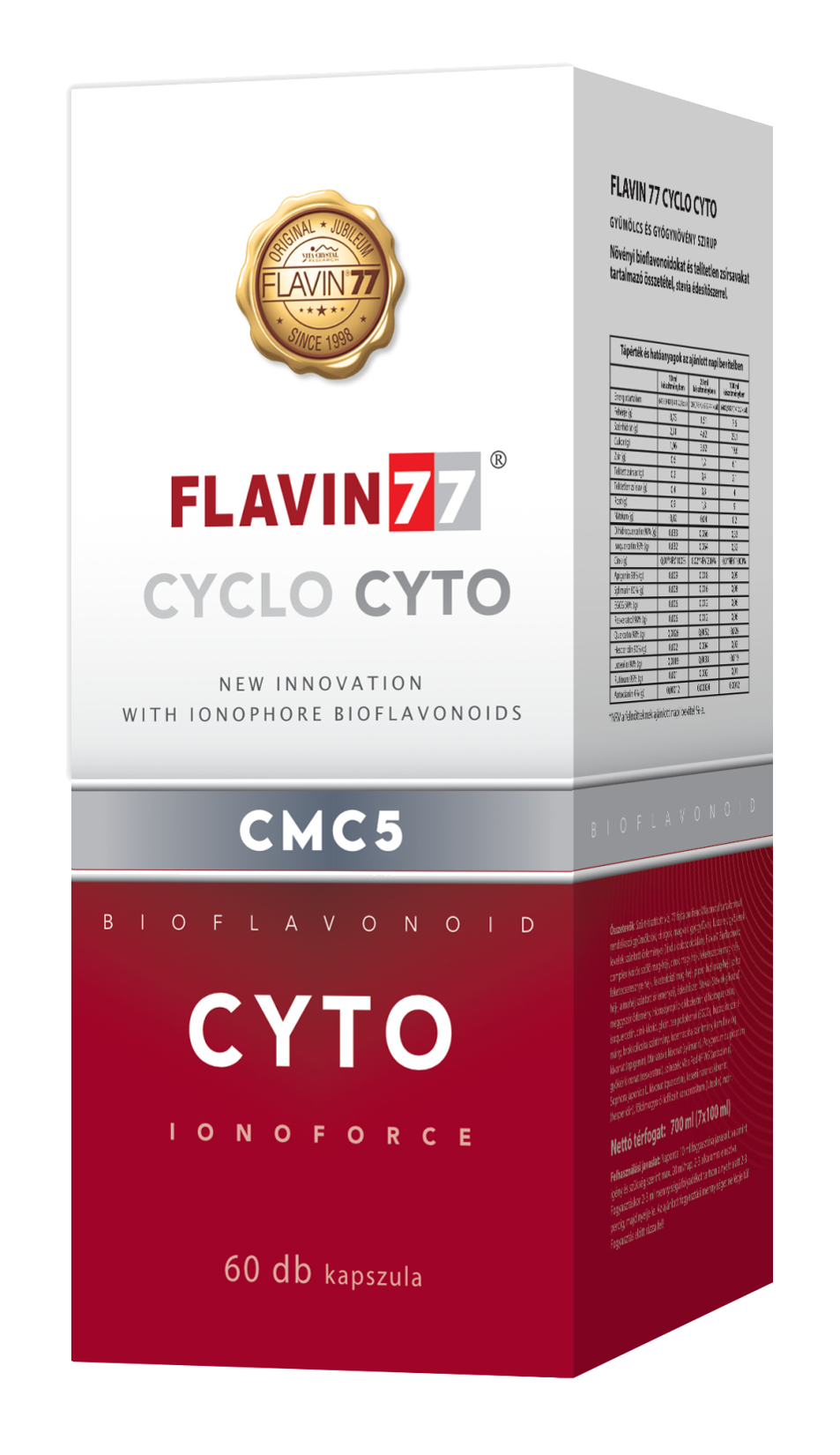
CMC6 - ovarian cancer

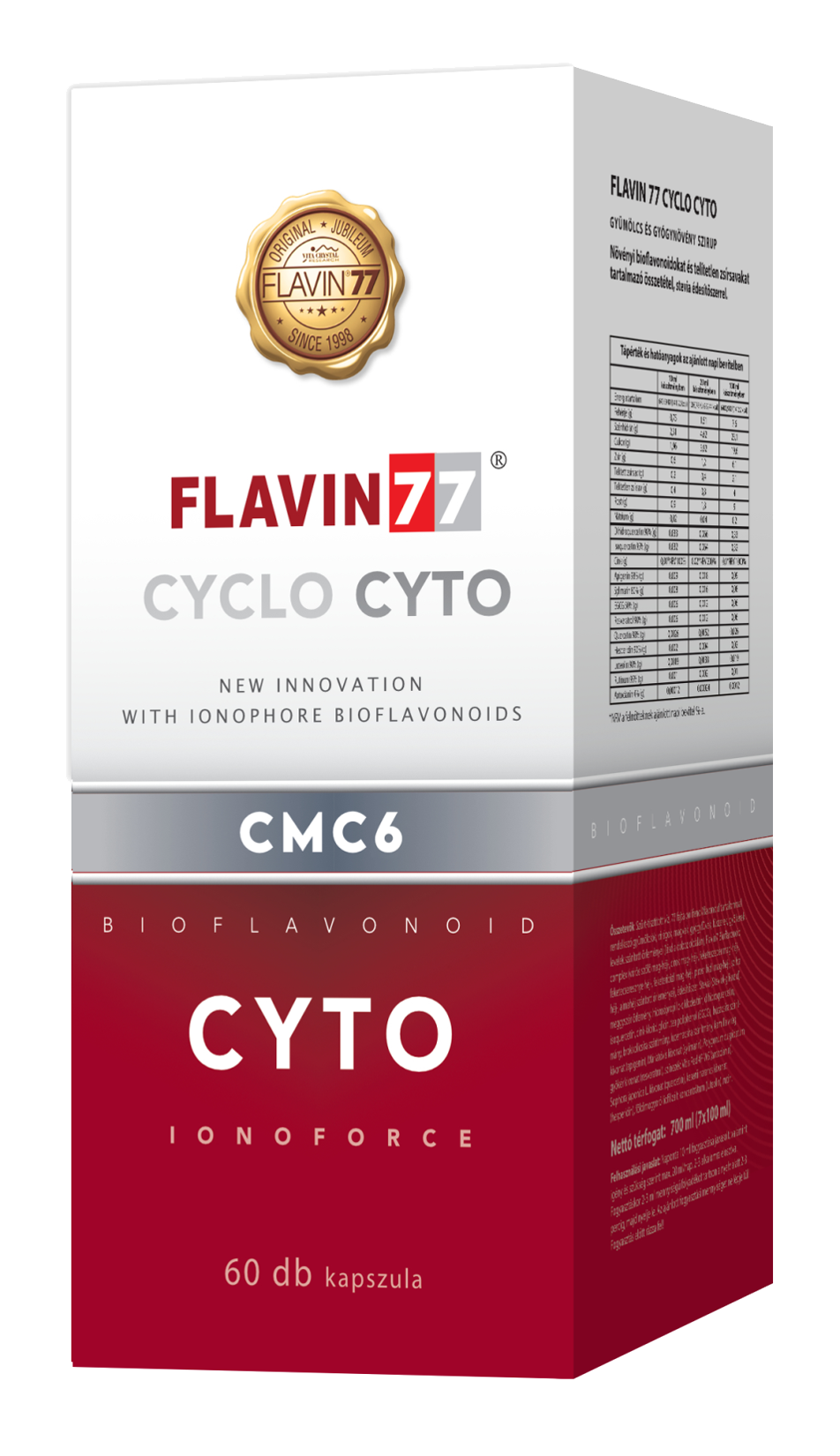
CMC7 - oral cancers

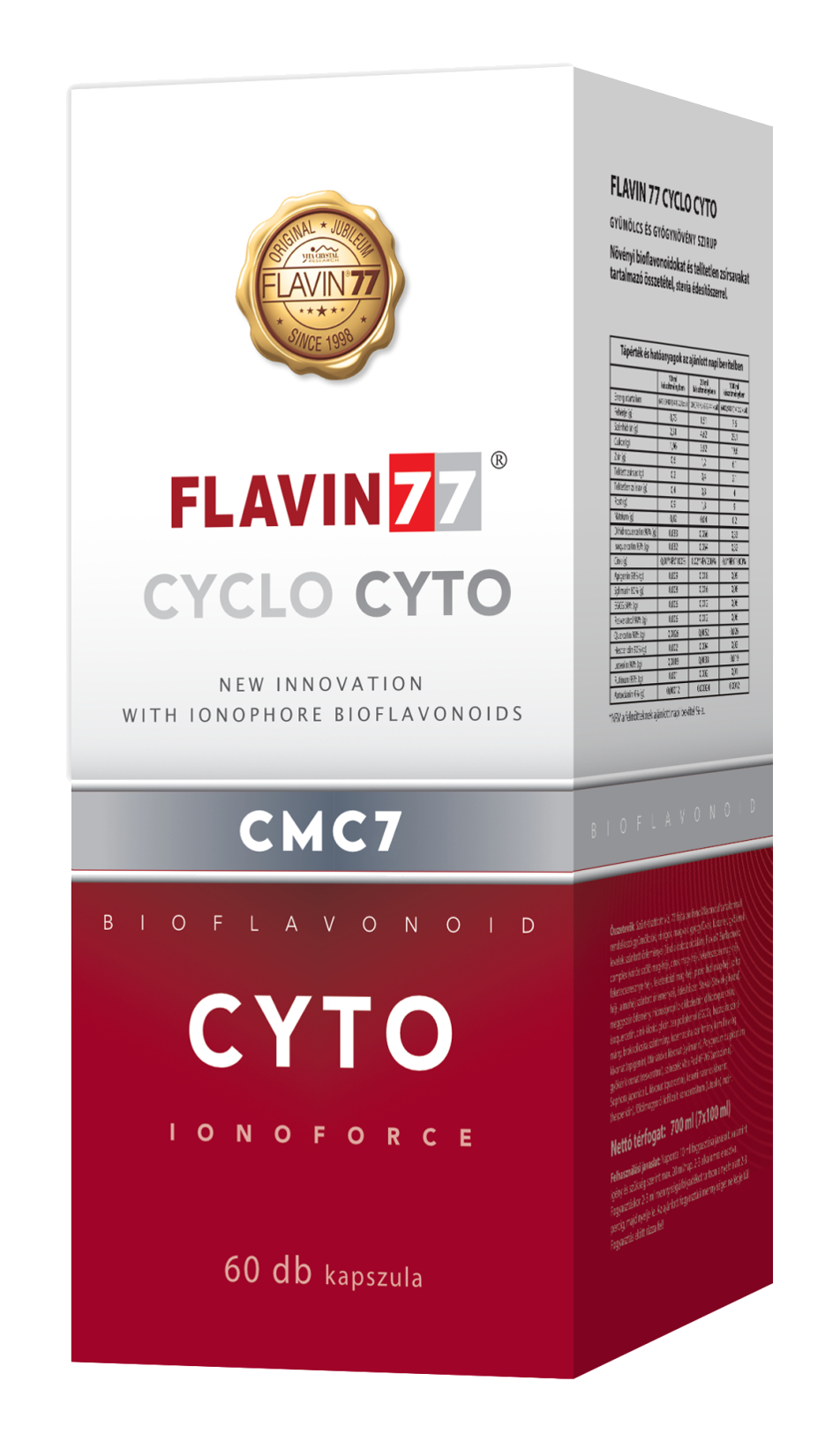
Extra, specialised flavonoid selections for the most common types of tumours
250€
250€
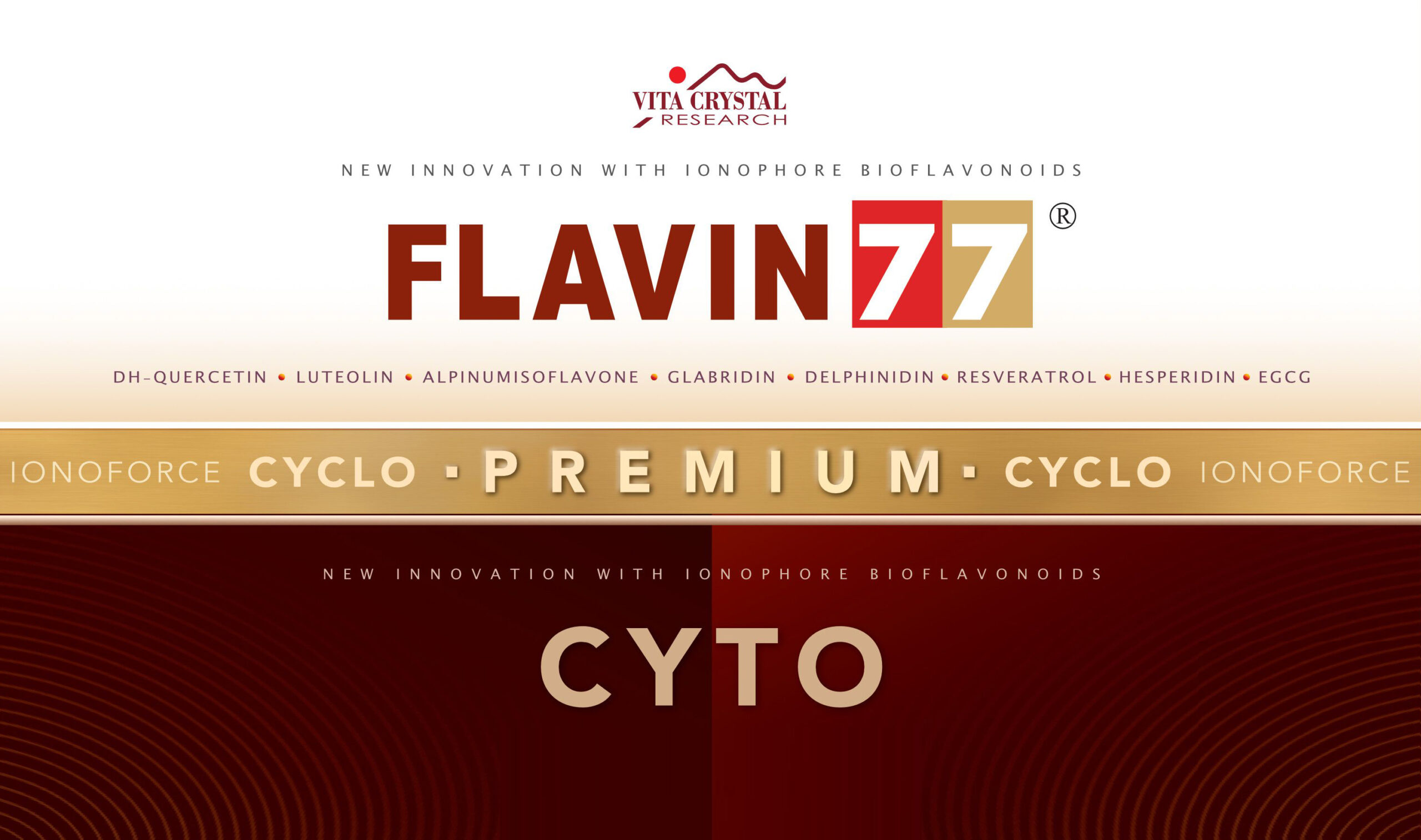
FLAVIN 77 CYCLO CYTO PREMIUM is an exclusive premium product with the highest active ingredient content for the premium consumers.
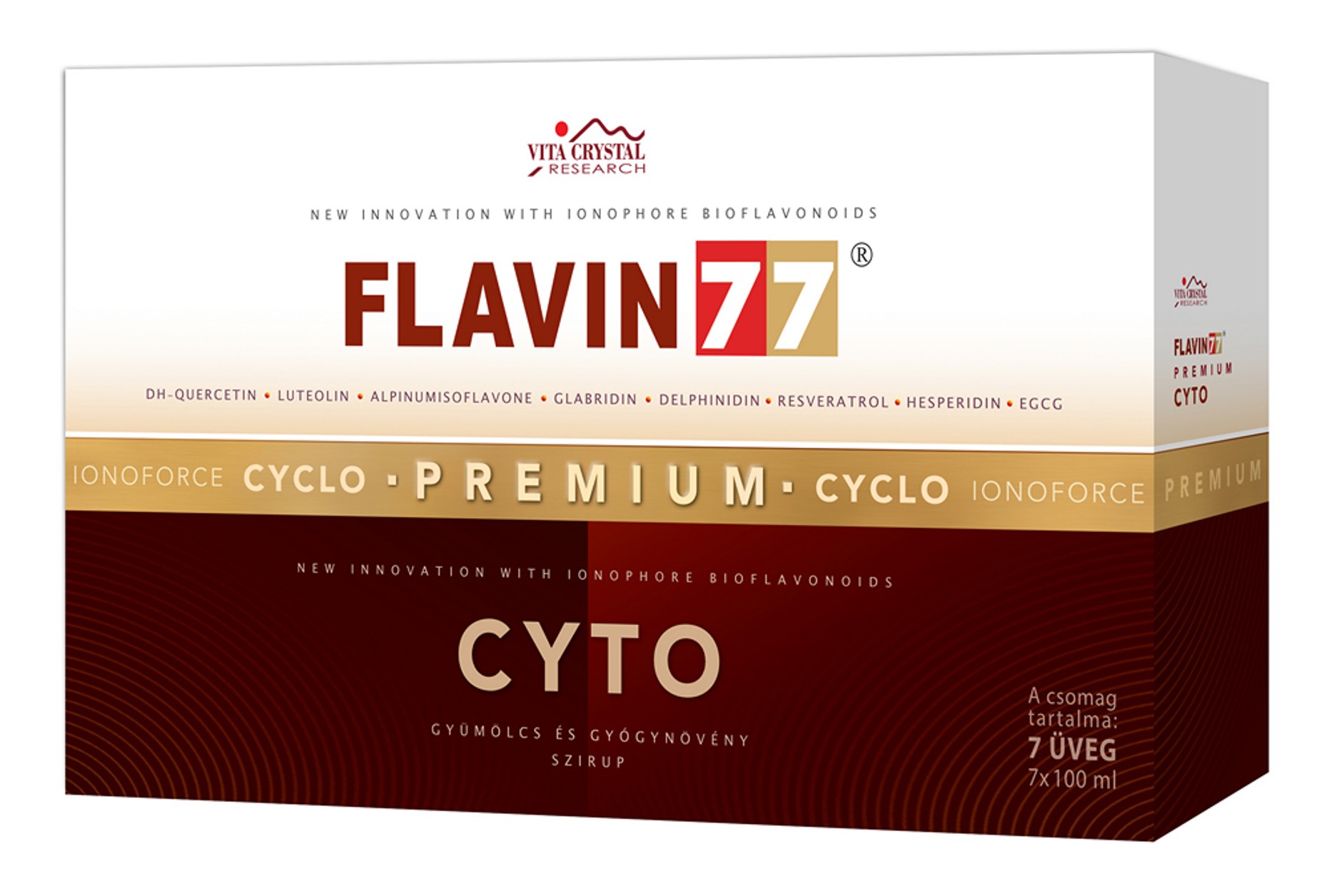
1100€
Added polyphenols: alpinumisoflavone, glabridin, delphinidin, dihydro-quercetin, luteolin, rutin, resveratrol, hesperidin, quercetin, EGCG.
Flavin77 CycloCyto Premium has the widest polyphenol and flavonoid capacity and extremely high active ingredient content. During the preparation, the most effective varieties of herbal phytochemicals were selected, and as a result of several years of experiments, we were able to grind them to nanoscale. Thus, the surface activity of essences that are beneficial to the human body may have increased one millionfold. As a result, the absorption rate of the substances contained in it (vitamins, flavonoids, amino acids) was also greatly increased.
In addition to the base ingredients of Flavin77 CycloCyto Premium, it contains polyphenols in increased, therapeutic doses. The positive physiological effects of the extra polyphenols have been the subject of numerous scientific publications.
Enhanced absorption: Because of the new technology, absorption through the mucosa in the oral cavity is much more efficient than with traditional formulations.
Due to their chemical properties, cyclodextrins are able to deliver the linked molecule with a much greater efficiency to the medium where they originally have a reduced absorption capacity.
The composition of Flavin77 CycloCyto Premium was optimalised based on results of meta-analysises that summarizing the genes influencing the development of cancer and the drugs and mechanisms that regulate them.
The active ingredients support mechanisms that optimize cell function, the cell cycle and increase cell lifetime.
Extra, specialised premium flavonoid selections for the most common types of tumours
CMC1 - lung cancer

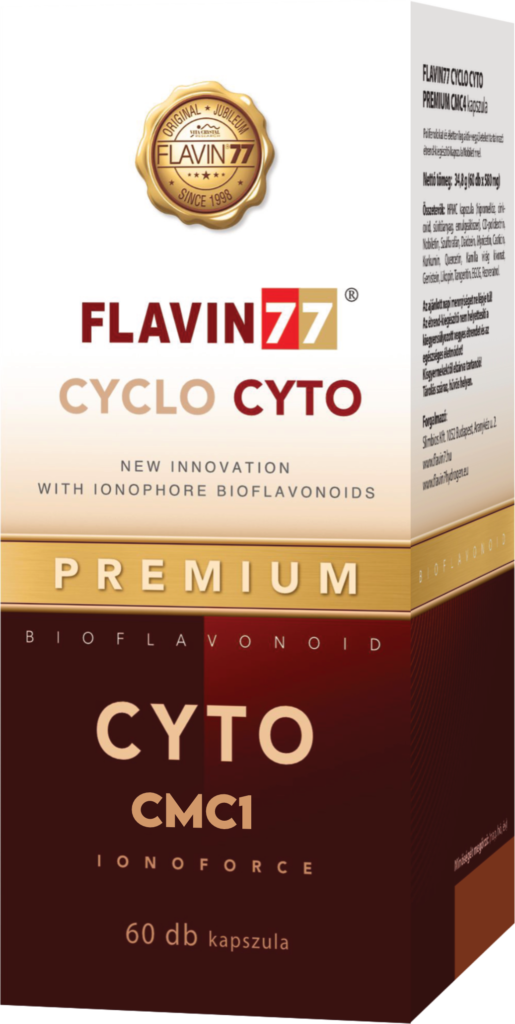
CMC2 - digestive cancers

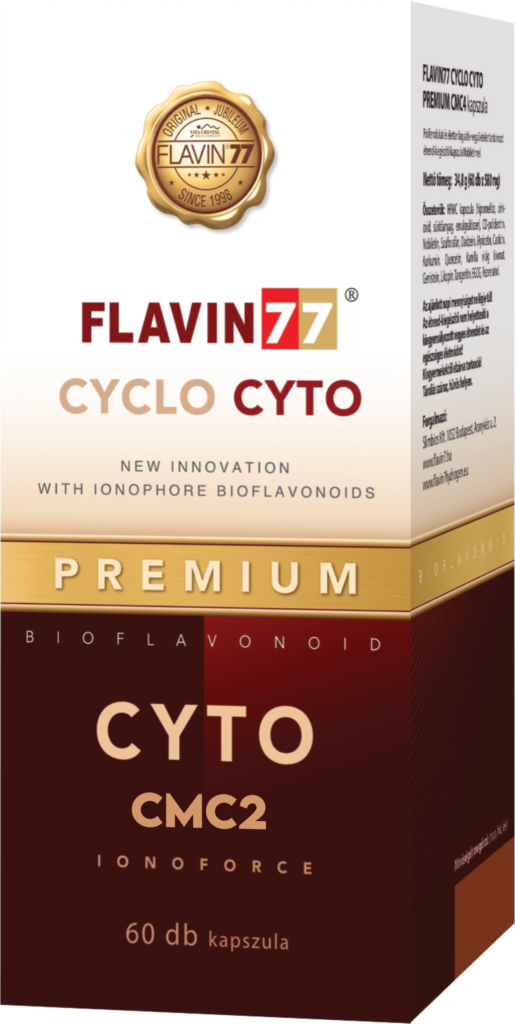
CMC3 - breast cancer

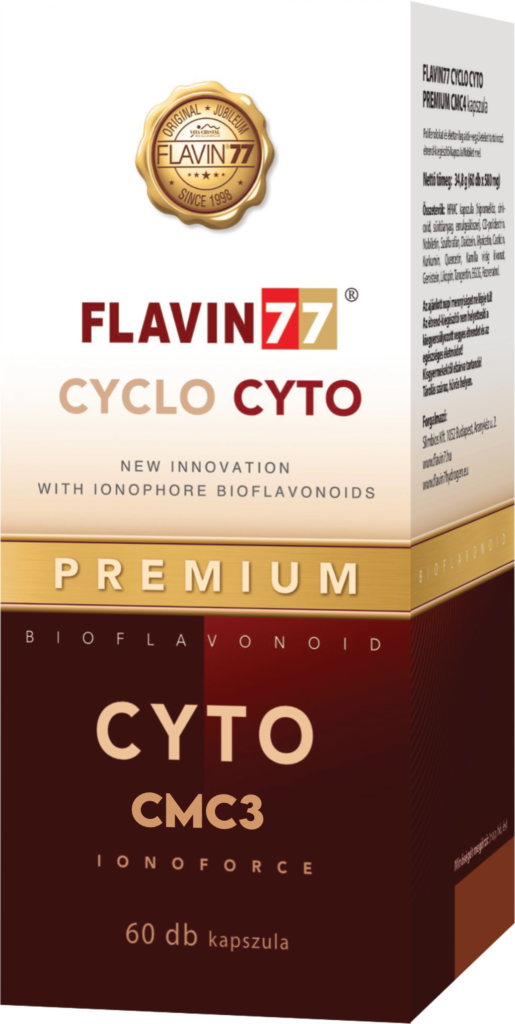
CMC4 - prostate cancer

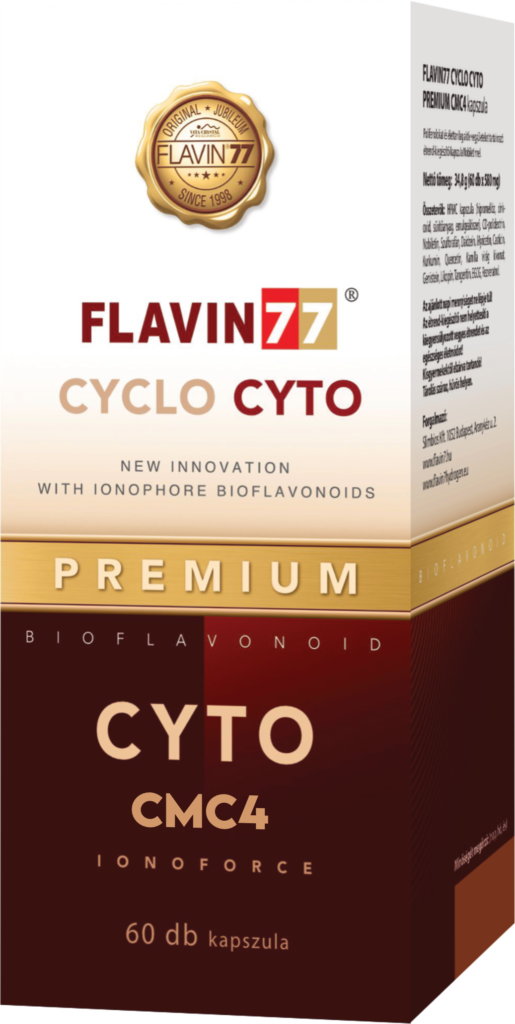
CMC5 - liver cancer

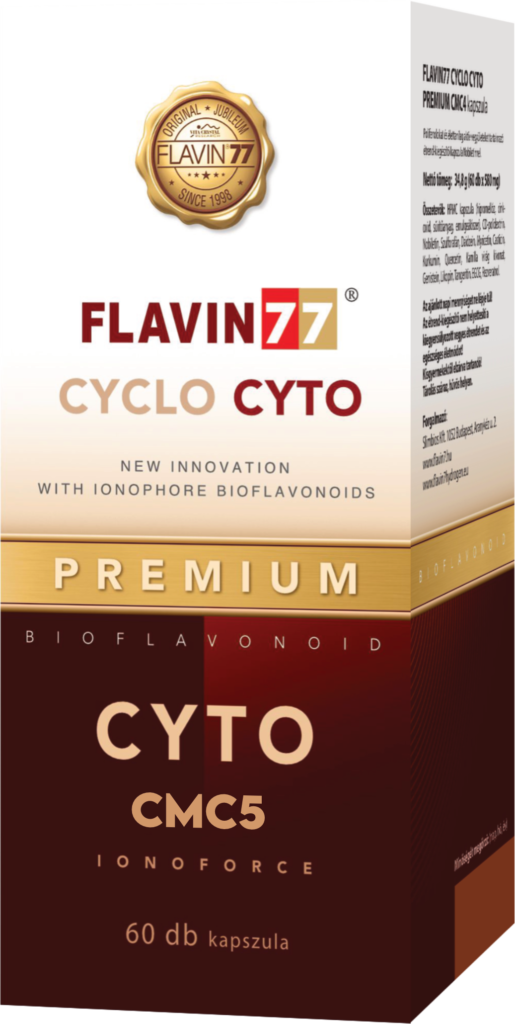
CMC6 - ovarian cancer

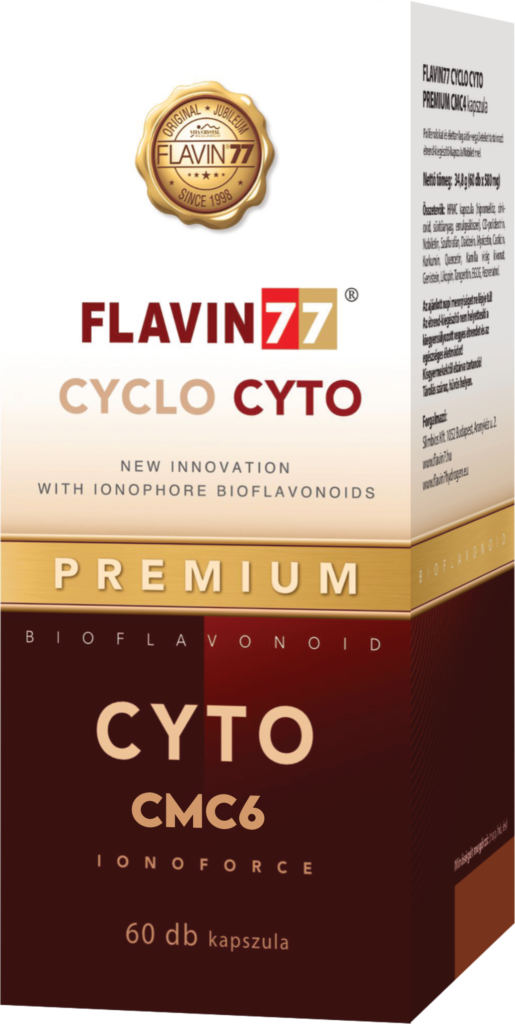
CMC7 - oral cancers

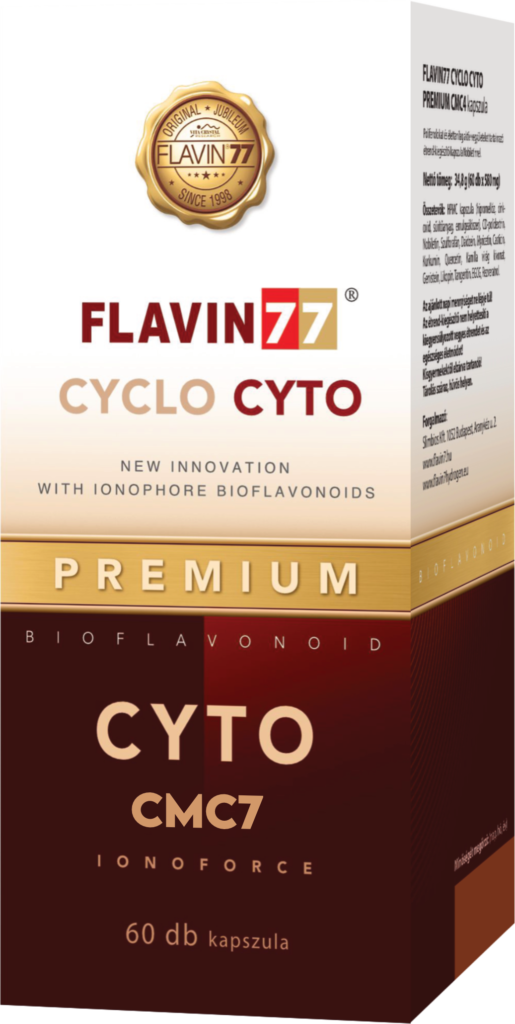
Extra, specialised premium flavonoid selections for the most common types of tumours
850€
850€
P53 - "THE GUARDIAN OF THE GENOME"
 TP53 protein acts as a tumor suppressor, which means that it regulates cell division by keeping cells from growing and dividing (proliferating) too fast or in an uncontrolled way.
TP53 protein acts as a tumor suppressor, which means that it regulates cell division by keeping cells from growing and dividing (proliferating) too fast or in an uncontrolled way.
The p53 protein is located in the nucleus of cells throughout the body, where it attaches (binds) directly to DNA. When the DNA in a cell becomes damaged by agents such as toxic chemicals, radiation, or ultraviolet (UV) rays from sunlight, this protein plays a critical role in determining whether the DNA will be repaired or the damaged cell will self-destruct (undergo apoptosis). If the DNA can be repaired, p53 activates other genes to fix the damage. If the DNA cannot be repaired, this protein prevents the cell from dividing and signals it to undergo apoptosis. By stopping cells with mutated or damaged DNA from dividing, p53 helps prevent the development of tumors.
Because p53 is essential for regulating DNA repair and cell division, it has been nicknamed the “guardian of the genome.”
EFFECT OF ZINC AND THE ROLE OF P53

The p53 tumor suppressor is a
transcription factor that contains a single zinc ion near its DNA binding interface. Zn2+ is required for site-specific DNA binding and proper transcriptional activation. In addition to its functional significance, zinc plays a dominant role in determining whether p53 folds productively or misfolds.
This gene plays a particularly dominant role in human health. The p53 tetramer coordinates a single Zn2+ in each of its four identical subunits. In response t
o DNA damage, telomere degradation, or other oncogenic stress signals, p53 activates transcription of genes involved in cell cycle arrest, DNA repair, apoptosis, and senescence. It can also enter mitochondria and promote apoptosis by a transcription-independent mechanism. Given the fact that p53 directs these numerous response pathways, it is not surprising that loss of p53 function leads to uncontrolled cell growth. p53 is the single
most frequently mutated protein in human cancer.
IONOPHORE EFFECT

Ionofor Zinc replenishment, p53 tumor suppressor gene activation within cells.
Using the IONOFORCE TECHNOLOGY, zinc is able to penetrate the cell’s double lipid layer with the help of quercetin and other flavonoids and reach the nucleus, where it is an essential fuel for the p53 tumor suppressor protein.
Further information: www.medpublics.com
RESEARCH
Restoring p53 active conformation by zinc increases the response of mutant p53 tumor cells to anticancer drugs. Full text
Monocytic Leukemia Zinc Finger (MOZ) Interacts with p53 to Induce p21 Expression and Cell-cycle Arrest. Full text
Tumor suppressive BTB/POZ zinc-finger protein ZBTB28 inhibits oncogenic BCL6/ZBTB27 signaling to maintain p53 transcription in multiple carcinogenesis. Full text
The beneficial effect of Zinc(II) on low-dose chemotherapeutic sensitivity involves p53 activation in wild-type p53-carrying colorectal cancer cells. Full text
Metalloregulation of the tumor suppressor protein p53: zinc mediates the renaturation of p53 after exposure to metal chelators in vitro and in intact cells. Full text
ENHANCED ABSORPTION
Due to their chemical properties, cyclodextrins are able to deliver the linked molecule with a much greater efficiency to the medium where they originally have a reduced absorption capacity.

